
planning for aging-in-place
Securing Tomorrow
When should you start planning for aging in place? The answer is now.
It takes stamina to address the necessary modifications and renovations you’ll need to age in place, and waiting until mobility or health issues arise can make the process more challenging and stressful. According to the AARP, only about 10 percent of homes nationwide are 100 percent prepared for senior living. Without a plan in place, it will impact your own quality of life, as well as your family, who may find themselves scrambling to make accommodations in a time of crisis. Planning allows you to maintain control over your living situation and maintain your independence for as long as possible.
5 Areas to Focus on
Aging-in-place remodeling doesn’t necessarily mean starting from scratch. With strategic modifications, your existing home can be transformed into a space that allows you to comfortably and safely age in place. And with time on your side, you can take these projects one at a time!
1. Prioritize One-Level Living
In general, the more you can locate essential spaces on the first level, the better. List your everyday tasks and how you would complete them if you had limited mobility. Which spaces would be too small, too high, or beyond your reach? What could be moved or adjusted on your first floor to make it most useful? Getting the laundry moved to your living level is very important!
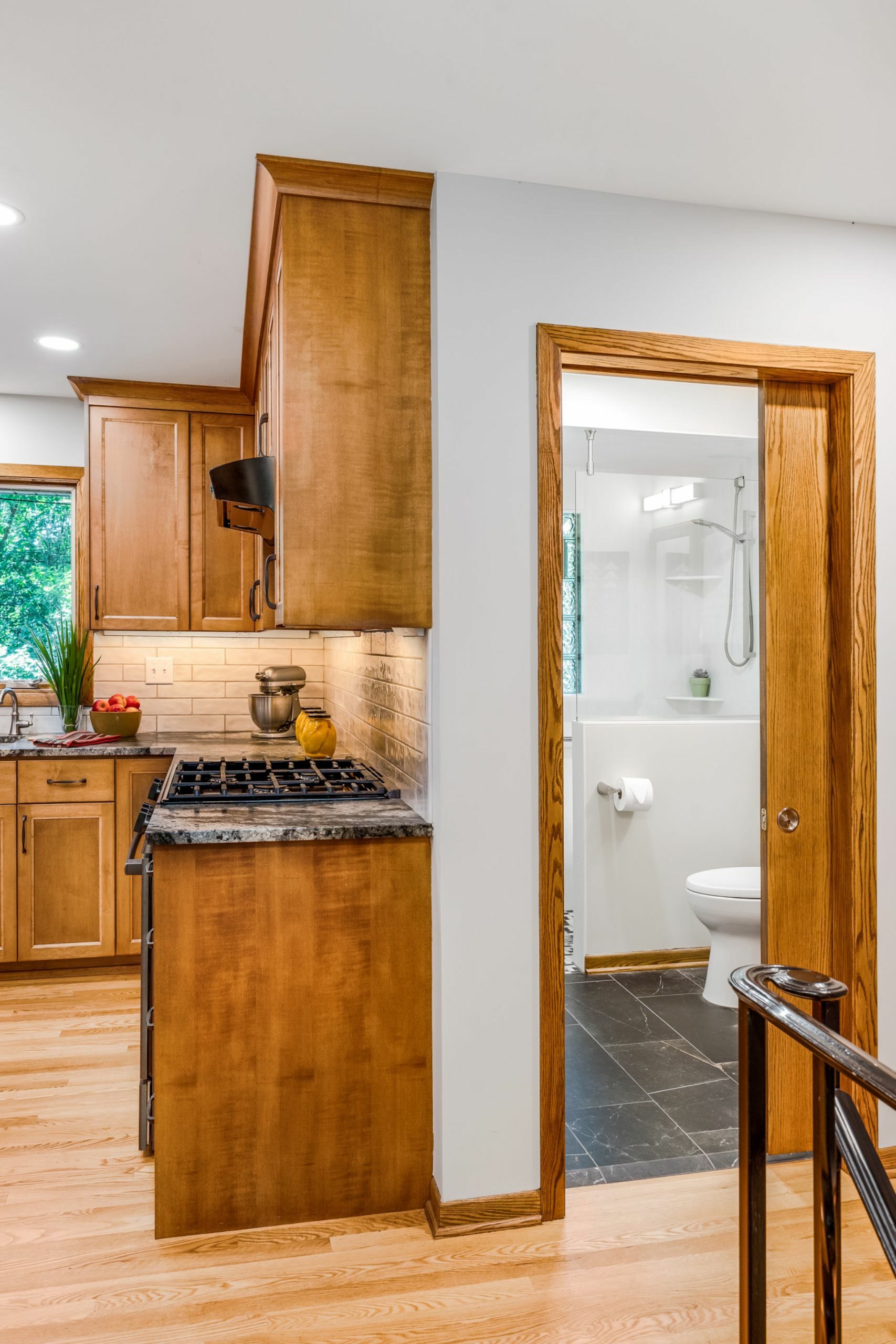
2. Accessible Bathroom
First, look at the size of the door, which typically is the smallest door in the house. Is it wide enough for a walker or wheelchair? Once you’re in the room, is there enough space to maneuver?
Also, think vertically. Do you have a low toilet and high sides on the tub? Both can be difficult to use if you have limited mobility. A quick way to check: would you be able to use them comfortably if your leg were in a full cast?
Take a look at our Universally Accessible St. Paul Condo for some universal design features we included for aging-in-place.
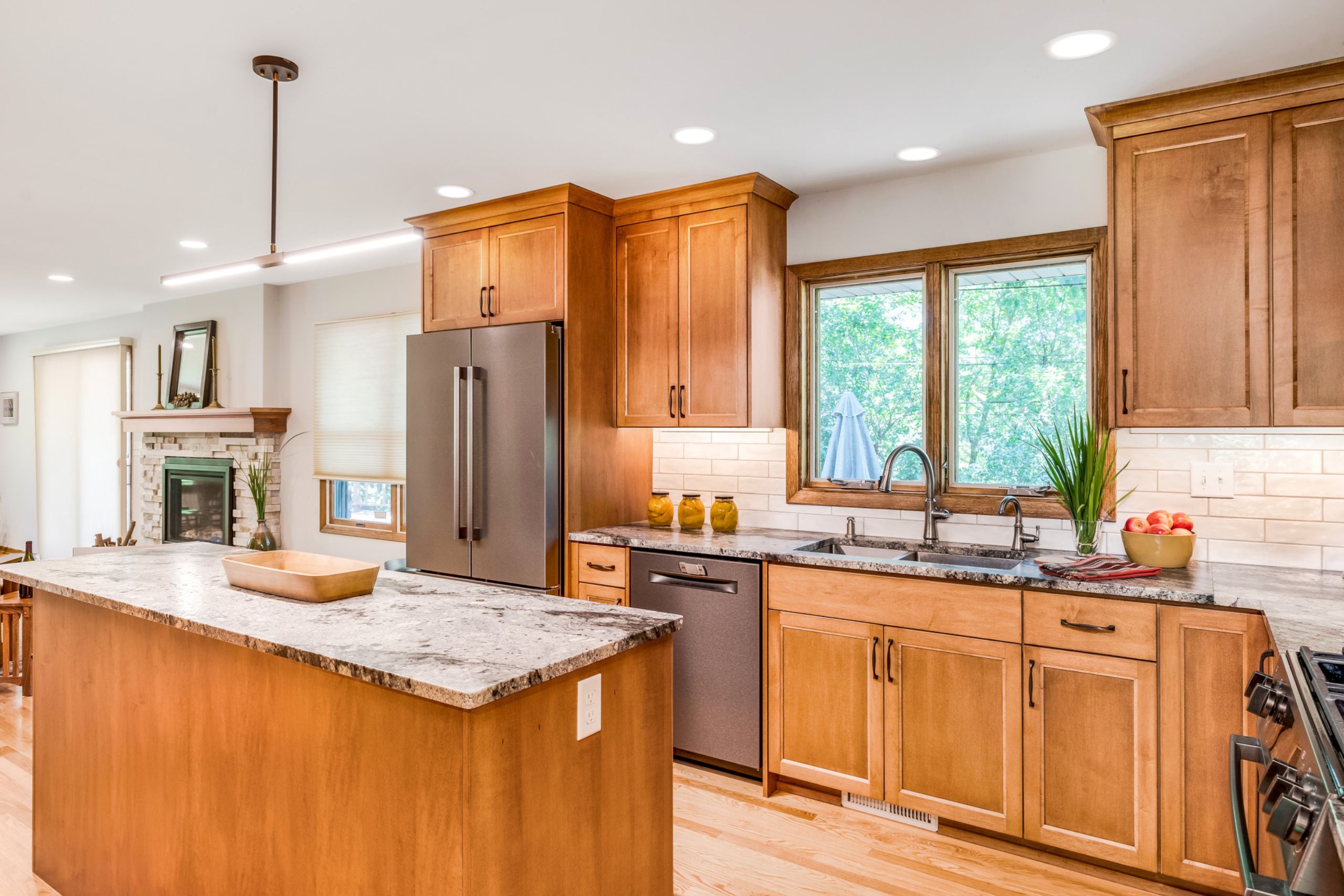
3. Spacious and Bright Kitchens
Next, check the clearances around your cabinets, doorways, and islands. Is there enough room to open the refrigerator and oven doors, load and empty the dishwasher, and move between the counters and the stove? Are the sink and counters at a height that works for everyone? Also, check if the floor surfaces are slippery or uneven, which could cause tripping or falling. Check out our 1970s Rambler Reimagined project to view a kitchen designed for aging-in-place.
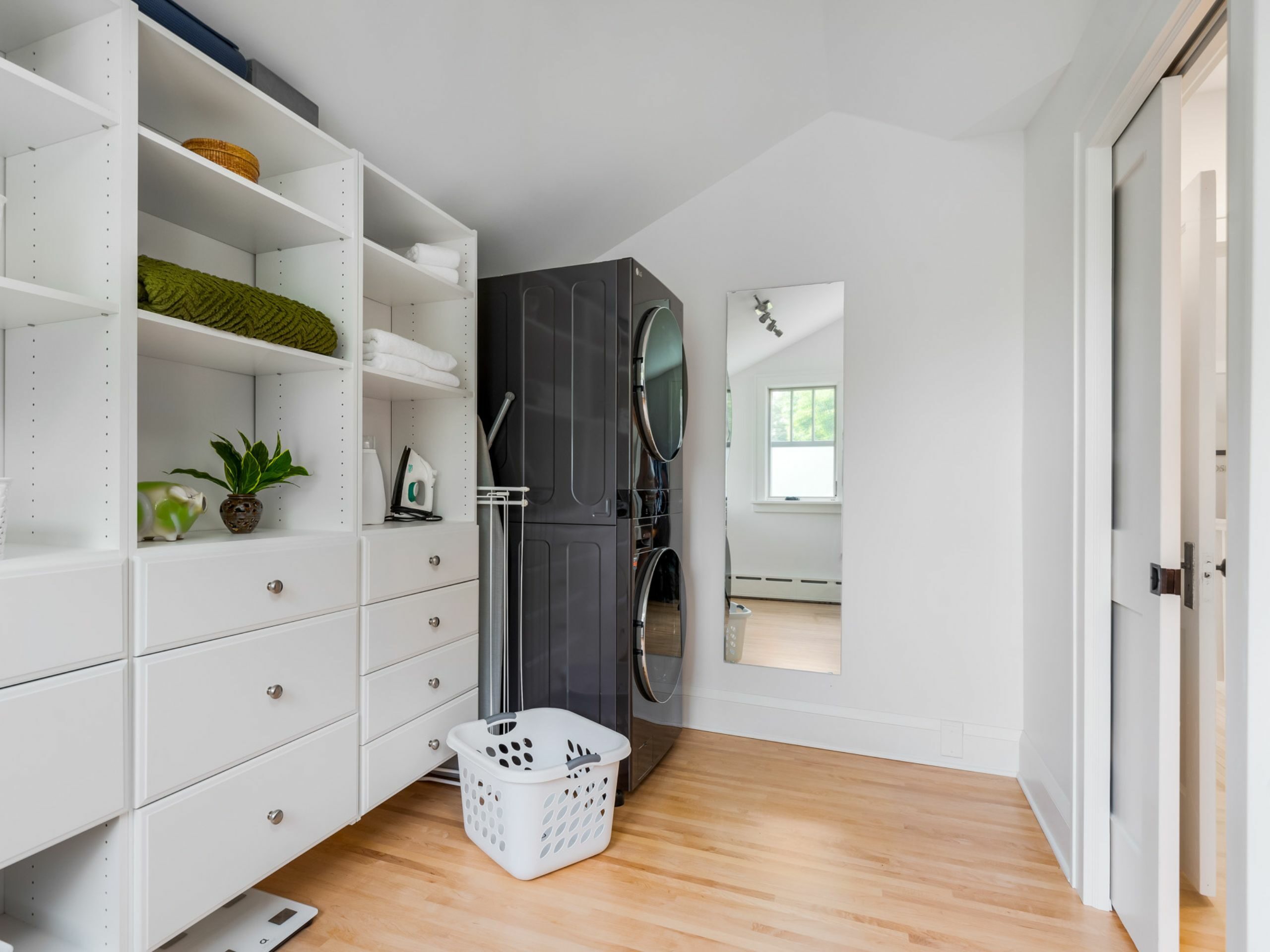
4. Easy-to-Acess Laundry
If you have an older home, it’s likely that your laundry area is in the basement, requiring you to carry baskets up and down steep stairs. A creative repurposing of space on your first floor or attached to your bedroom.
5. Conquering the Stairs
Finally, take a look at how many stairs you have in your home. Stairs to the front and back door, stairs between floors, and possibly multiple sets of stairs leading from landings. Even if you move most of your living space to the first floor, you may need to navigate entrance steps from the garage or yard. Remodeling tweaks can smooth out and remove these obstacles.

Aging-in-place remodeling without sacrificing style, design, or functionality.
As you take on remodeling projects, stop to think how you can incorporate aging-in-place features. With a skilled, CAPS remodeler like John here, you won’t be able to tell the difference.
So, don’t wait until it’s too late. Start thinking about aging-in-place remodeling now, while you still have the stamina and resources to make informed decisions and take action. Your future self will thank you for it.
More on aging-in-place
-
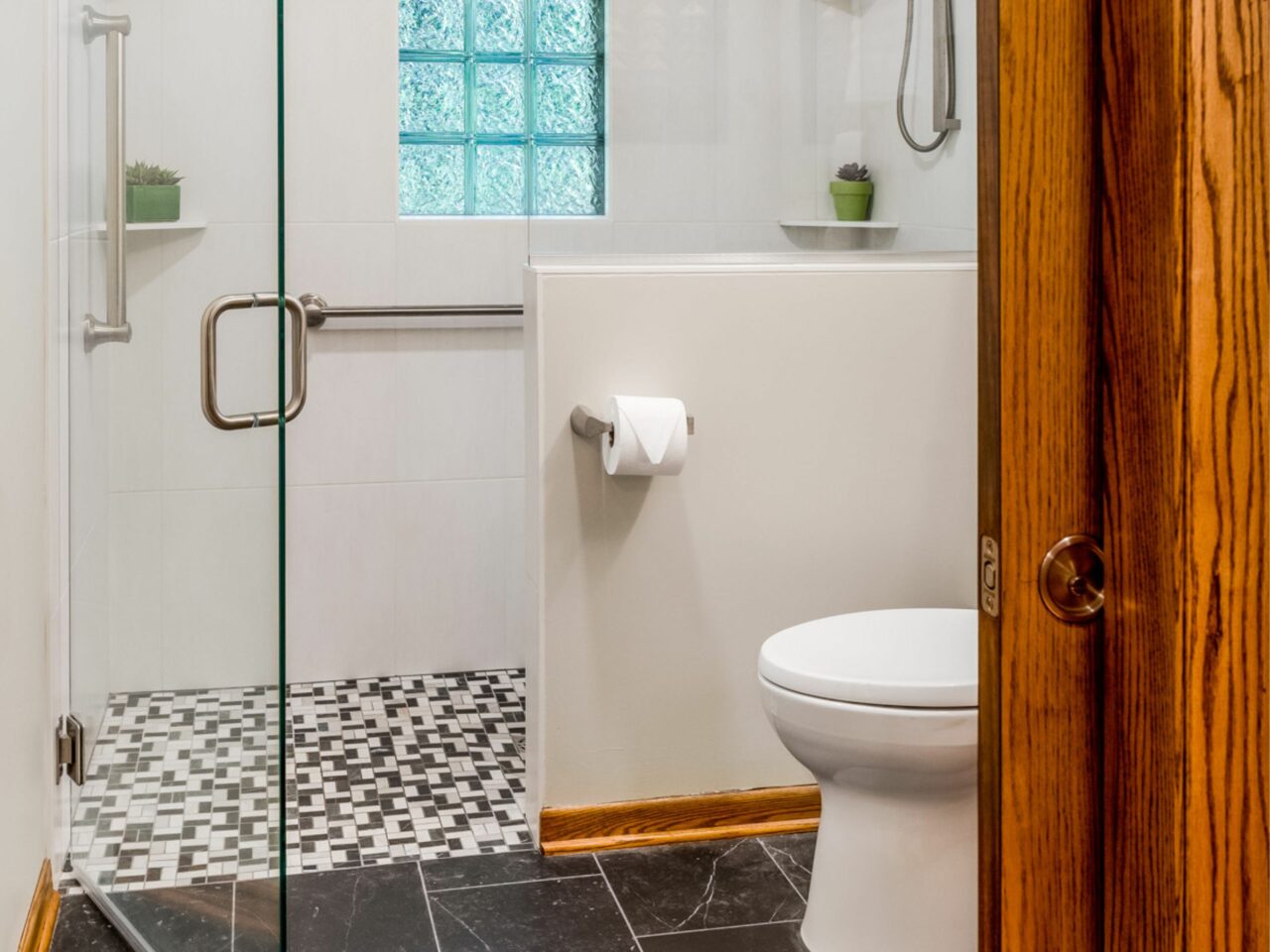
Designing for Comfort and Safety
Add in these aging-in-place features so you can use the space with ease and minimal assistance, no matter how old you grow.
-
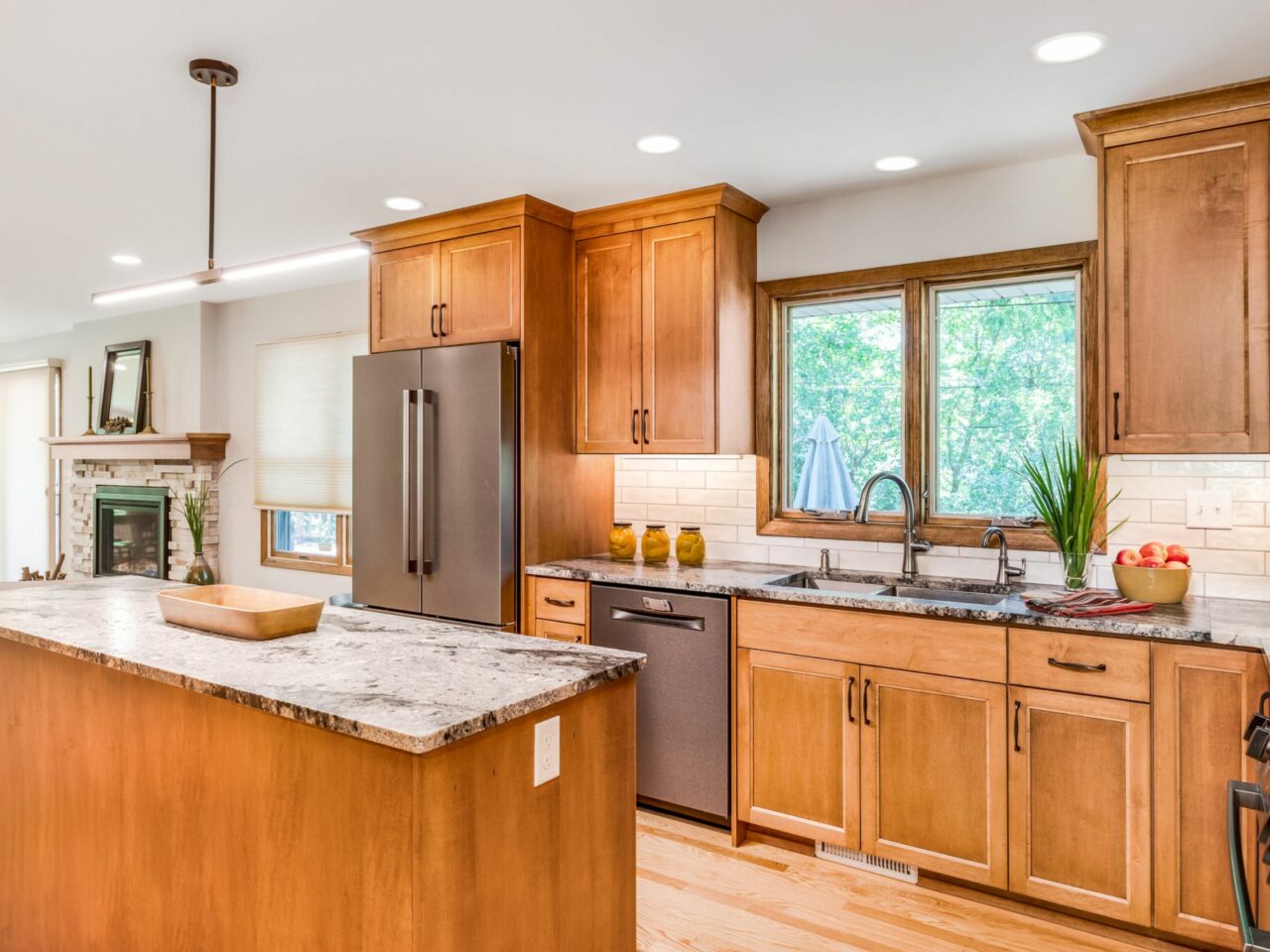
How to Prepare Your Home for the Future
We hope that you’ll consider these aging-in-place tips while planning your next new construction or retirement renovations.
-

What is a CAPS?
John Sylvestre explains what a Certified Aging-in-Place Specialist (CAPS) remodeler is and what can be achieved through training and testing.
